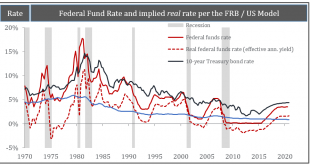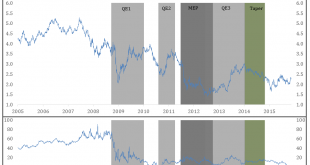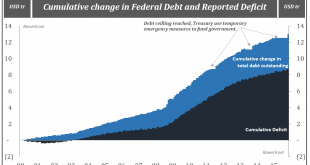We have argued for a long time that 2016 will probably be a year of recession in the US and the Federal Reserve’s intent on raising rates will only help expedite it. We believe the current rate cycle will be short lived as the Federal Reserve is constrained by the heavy debt load weighing on the US economy. Or more specifically, the large share of unproductive and counterproductive debt that drain the US economy for resources. Source: Federal Reserve – Financial Accounts of the United...
Read More »Unintended consequences of lift-off in a world of excess reserves
Bar a disastrous NFP print this coming Friday the US Federal Reserve will change the target range for the Federal Reserve (Fed) Bank’s Funds rate from the current level of zero – 25bp to 25 – 50bp on December 16th. The Fed will effectively raise the overnight interbank rate of interest to around 30bp from an average of only 12bp in 2015. Ironically, that will be seven years, to the day, when the Fed first lowered rates to the current band. During the period of ZIRP madness, the Fed’s...
Read More »What a Negative SWAP Spread Really Means
SWAP spreads recently took a nosedive and are once again trading at negative levels, even for shorter maturities. As can be seen from the chart below, treasury yields, here represented by the 10 year maturity, rose during QE policies programs contradicting the very raison d’être spouted by the central bankers. Interestingly enough we also see the same pattern in SWAP spreads. As QE programs were enacted SWAP spreads started to move upwards, just to rollover as the central bank program...
Read More »How the Fed gave away its independence – Interest Rate Sensitivity at ZLB
In fiscal year 2014, which ended September 30 2014, the Federal government of the United States reported a cumulative deficit of US$484 billion, while the total debt outstanding increased by more than a trillion dollars. For fiscal year 2015, the difference was negligible because the US Treasury conducted so called emergency measures to adhere to the Congressional imposed debt ceiling. As soon as Congressional leaders agreed among themselves, the debt ceiling was raised and US debt...
Read More »The Credit Multiplier – Revisited
In last week’s article, we explained how the yield curve could cause GDP to contract in The Yield Curve and GDP – a causal relationship. Some of our readers suggested the analysis was wrong on back of an outdated view of modern money creation. The critics claim modern banks are not dependent on central bank reserves to create additional money; citing a Bank of England article from 2014 (which we have been well aware of) [A] common misconception is that the central bank determines the...
Read More » Swiss Economicblogs.org
Swiss Economicblogs.org




